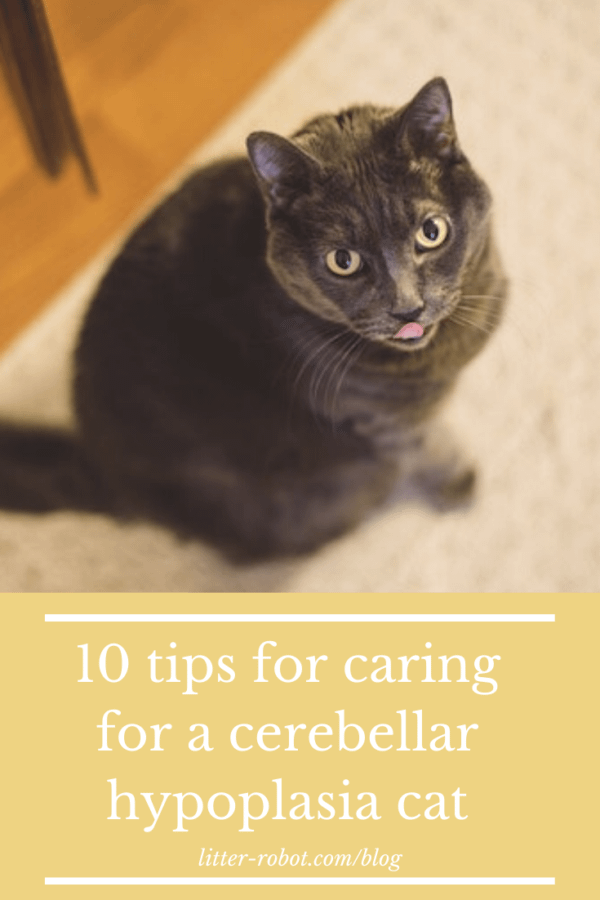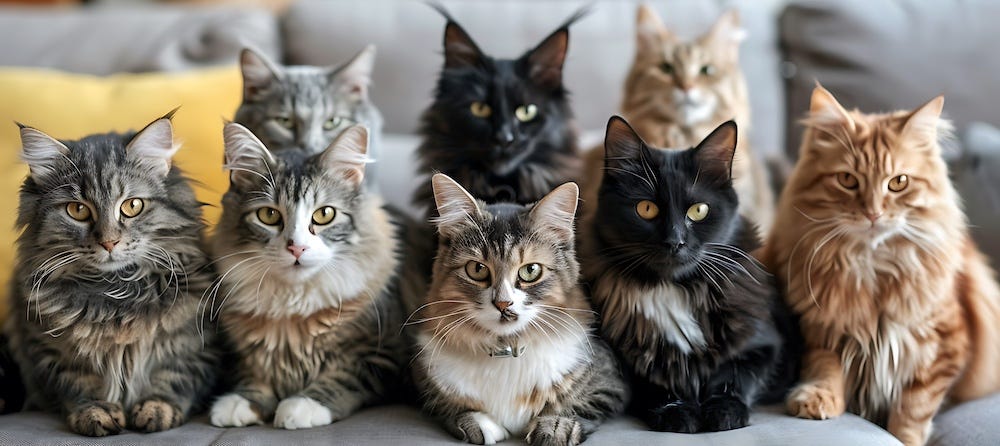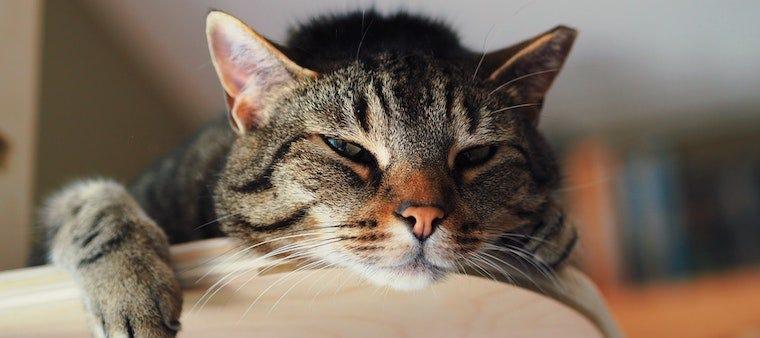Unless you or someone you know has cared for a cerebellar hypoplasia cat (or you’ve come across one on social media), you’ve probably never heard of this neurological condition. Find out what it takes to care for a cerebellar hypoplasia cat, and why you should give one of these wobbly kitties a home!
What is cerebellar hypoplasia?
Feline cerebellar hypoplasia, also known as wobbly cat syndrome, is a neurological disorder that occurs when the cerebellum of the brain does not properly develop in the womb. It is congenital, so it only affects cats that are born with it—it cannot be contracted or developed later in life.
The disorder affects cats’ coordination, balance, and fine motor skills, ranging from mild to severe. Fortunately, it is not a painful condition, nor is it contagious.
What causes it and can it be prevented?
Cerebellar hypoplasia most commonly occurs when a pregnant cat becomes infected with feline panleukopenia virus—also known as feline distemper—and passes the infection to her unborn kittens. Growing nerves in the unborn kitten’s cerebellum are destroyed causing the kitty to be disabled. Less common causes include a kitten suffering brain trauma while the cerebellum is still developing or being exposed to other inflammatory diseases in the womb, such as toxoplasmosis.
So can cerebellar hypoplasia be prevented? The answer is a resounding YES. Simply vaccinate your kitten or cat against feline distemper before they can become pregnant. You can vaccinate kittens as early as 6-8 weeks. Even better? Vaccinate AND spay or neuter your pets!
What are symptoms of cerebellar hypoplasia?
It’s called wobbly cat syndrome for a reason. You’ll notice symptoms in a cerebellar hypoplasia cat as soon as he or she can stand and walk, around 4-6 weeks of age. As mentioned earlier, the severity of the condition has a wide range. Symptoms typically include:
- Head bobbing, head tremors
- Jerky or uncoordinated walking
- Swaying from side to side, or “drunk” walking
- Unsteady or clumsy wide-legged stance
- Inability to judge distance
- Splayed feet or falling over
How is it diagnosed and treated?
There is no standard test to diagnose feline cerebellar hypoplasia, although a veterinarian or veterinary neurologist may be able to take an MRI scan to see an underdeveloped cerebellum. Before this step, the vet will want to perform routine exams—such as blood work, electrolyte panel, and urinalysis—to rule out other serious medical conditions.
Unfortunately, there is no cure for cerebellar hypoplasia. The condition is permanent, but the symptoms should not worsen with time. Depending on the severity of the symptoms, pet parents and veterinarians together should consider the cat’s quality of life. Sadly, for the most severe cases, euthanasia is the most humane option.
The good news is, most wobbly cats can lead happy and relatively normal lives! Read on to learn how you can help care for a cerebellar hypoplasia cat.
10 tips for caring for a cerebellar hypoplasia cat
1. Spay or neuter
Due to the most widely accepted transmission of the virus that can lead to the disease in developing kittens, it is recommended that cerebellar hypoplasia kittens be spayed or neutered. There are many other benefits that come with spaying and neutering as well!
2. Keep your cat indoors-only
Because a cerebellar hypoplasia cat has compromised balance and coordination, he should never be allowed alone outside. He will be prone to injuries and cannot protect himself well against predators. You may wish to walk him on a leash or build a protected “catio” structure instead.
3. Do not declaw (ouch!)
This goes for all cats, but especially those with wobbly cat syndrome. Because these cats can’t typically jump, they must develop climbing skills and use their claws for balance.
4. Raise food and water dishes off the floor
Make it as easy as possible for them to eat and drink. In addition, use wide bowls for food and water dishes.
5. Provide large litter boxes with easy access
A large litter box that is easy to get in and out of will be best for cats with cerebellar hypoplasia. You might also want to provide a ramp for easier access. (Check out the Litter-Robot 4 Essentials Bundle for a self-cleaning litter box and ramp.)
6. Restrict access to stairs with a baby gate
You’ll want to restrict access to any place that a wobbly cat could potentially fall and injure himself. Think stairs, steep landings, and more.
7. Add traction around the house with non-slip mats
If you have hardwood or slick floors, help your wobbly cat with non-slip mats, foam pads, or yoga mats that create traction. Use mats in front of food and water dishes as well as the litter box.
8. Encourage exercise and climbing
As mentioned earlier, a cat with this condition will have a difficult time jumping or running, so his best form of exercise may come in the form of climbing. Provide carpeted cat trees and other climbing spots, but be sure to cushion the surrounding area with foam pads and soft blankets in case the kitty takes a tumble—which is not unlikely.
9. Be careful introducing other pets
Your cerebellar hypoplasia cat will probably get along just fine with other cats and dogs in the house. However, the condition does leave him more vulnerable. Make sure to supervise and slowly introduce your pets to one another—particularly large dogs. Spruce Pets explains, “Dogs, especially those with higher prey drives, may perceive the cat as prey in distress and chase or attack out of instinct.” Better to err on the side of caution!
10. Consider hydrotherapy
Some vets recommend hydrotherapy for more severe cases of cerebellar hypoplasia. This type of therapy has been found to help build up muscle strength, which aids in mobility.
If you have the time and patience to open your home to a cerebellar hypoplasia cat, you’re likely in for an extremely rewarding experience.
Sources:
- VCA Hospitals
- Wobbly Cat Syndrome: An Interesting But Harmless Condition
- Cerebellar Hypoplasia Cats Are Clumsy from Birth
- Congenital and Inherited Disorders of the Nervous System in Cats
- Cover photo by Kaitlyn Baker on Unsplash







